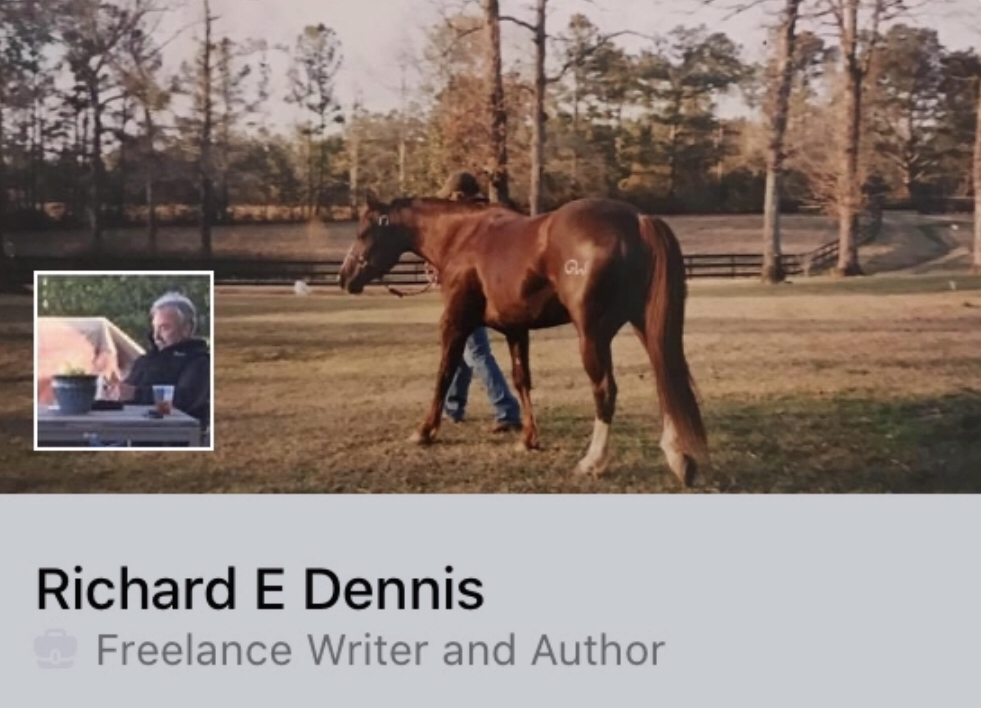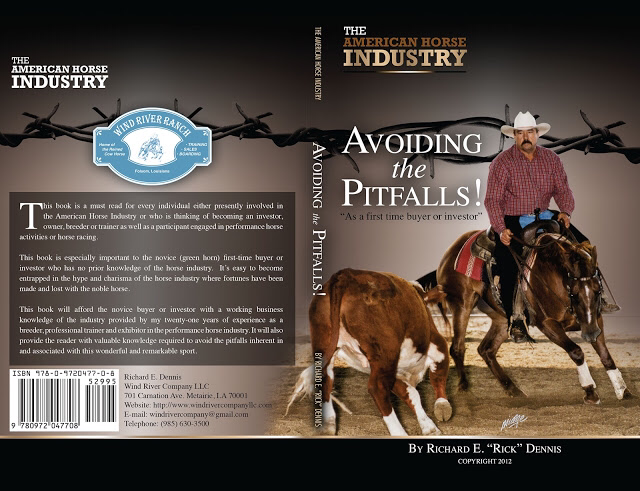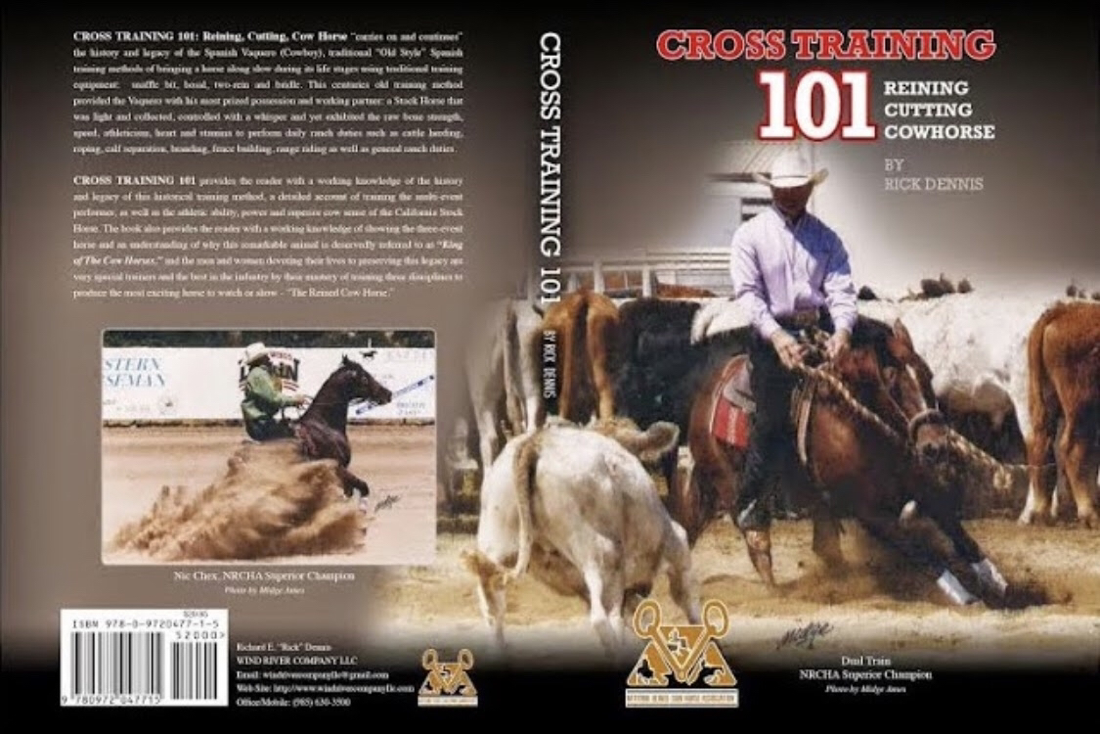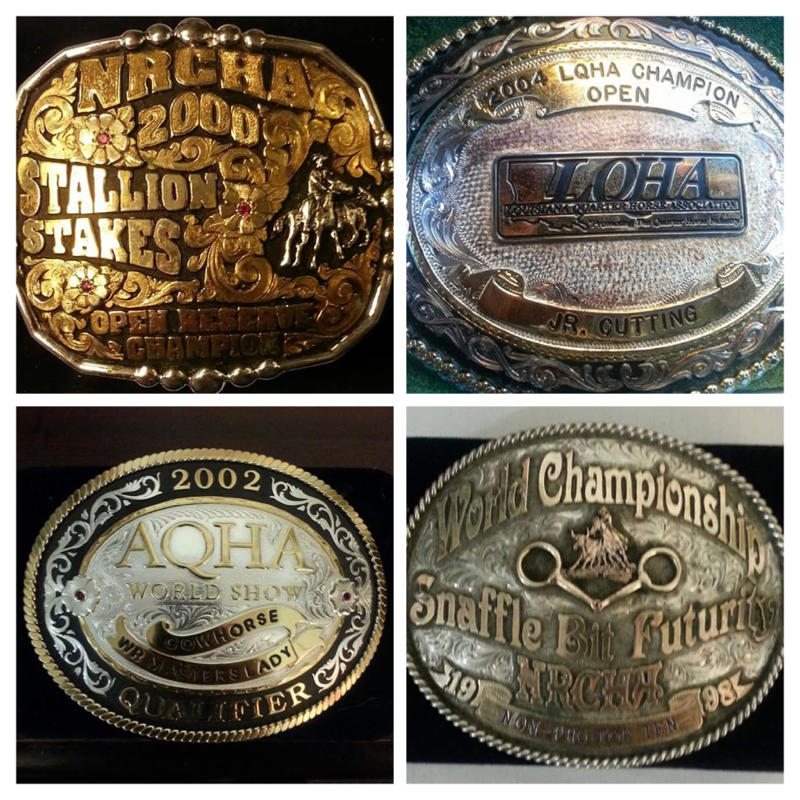|
WHERE’S THE HORSE INDUSTRY HEADED, PART 2
By Richard E. “Rick” Dennis CPP Freelance Writer, Author, and Journalist April 24, 2020 © 2020 All Rights Reserved PREVIOUSLY On July 14, 2014 I authored and released an article entitled: Where’s The Horse Industry headed. The article was released on http://www.allaboutcutting.net. The article was structured in response to a down-turn in the horse industry and the article offered specific steps the horse industry could take to overcome this calamity. More specifically, it included a myriad proposals for Horse Associations to survive the down-turn. Overall, the horse industry survived the down-turn in the industry, but the industry has never been the same as it was in it’s hay day, or since. Today, the industry is again faced with a another calamity. However, this calamity is even more dire and in some instances the measures to combat it can mean the difference between life and death. The new calamity is Covid 19 – The Corona Virus. https://allaboutcutting.net/%E2%98%9B-where-is-the-horse-industry-headed-7-18-14/ COVID 19 – THE CORONA VIRUS As we all know, the Corona Virus or Covid 19 entered the world scene in late December 2019 and has successfully shut down the worlds economy. The highly infectious and contagious virus has devastated world populations, caused sickness and death, and instituted fear in most of the world’s populations. As a kid growing up in the 1950’s I remember a similar disease outbreak which shares a common denominator with the Covid 19 virus – Polio. The shared common denominators are – both are highly infectious and contagious. However, there’s one difference between the two viruses. Polio, has a successful vaccine against the harmful and dire effects of the disease and as of yet, Covid 19 doesn’t have an effective vaccine. When Polio first hit the scene there was no vaccine and the same goes for Covid 19. Sixty years ago, polio was one of the most feared diseases in the U.S. As the weather warmed up each year, panic over polio intensified. Late summer was dubbed "polio season." Public swimming pools were shut down. Movie theaters urged patrons not to sit too close together to avoid spreading the disease. Insurance companies started selling polio insurance for newborns. The fear was well grounded. By the 1950s, polio had become one of the most serious communicable diseases among children in the United States. In 1952 alone, nearly 60,000 children were infected with the virus; thousands were paralyzed, and more than 3,000 died. Hospitals set up special units with iron lung machines to keep polio victims alive. Rich kids as well as poor were left paralyzed. All ethnic groups were affected as were male and female genders. Then in 1955, the U.S. began widespread vaccinations. By 1979, the virus had been completely eliminated across the country. Now polio is on the verge of being eliminated from the world. The virus remains endemic in only two parts of the globe: northern Nigeria and the border between Afghanistan and Pakistan. The differences between the two highly infectious and contagious viruses are: Polio didn’t shut down the worlds economy and there is a vaccine for Polio. As of yet, a vaccine hasn’t been invented for the Covid 19 virus. However, the techniques used to combat Polio are in use today to combat the Covid 19 Virus. The main one in use is: social distancing. COVID 19 AND REOPENING THE ECONOMY Once the Covid 19 virus has reached the peak of its infections in the United States and Globally, the next step for governments, in the U.S. and around the globe, is to develop a plan to gradually reopen the world’s economies, which includes the horse industry. As it was back in the 1950’s, the proposed safety protocols will most likely include social distancing – among other precautionary measures. Notwithstanding, until an effective vaccine for Covid 19 is developed the world as we knew it before the Covid 19 will disappear. The new precautionary techniques proposed and put in place, by governments around the globe, to prevent spread of the disease will be the new normal. THE HORSE INDUSTRY SURVIVING COVID 19 The big question for the horse industry is: How does it survive the Covid 19 calamity, especially with social distancing guidelines in place? After all, the horse industry is a social happening, at it’s finest. Post Covid 19 will be entirely different from Pre-Covid 19. Therefore, post Covid 19 will establish a new set of guidelines for the horse industry in the same context as it does for society and other social gatherings. The big question is – what is the new normal for the horse industry? Until an effective vaccine is developed, I can envision horse shows being absent of spectators and only allowing participants. I can also envision horse shows being telecasted, or a virtual horse show so-to-speak. Instead of paying an entry fee to the arena, the viewer will pay a fee similar to pay-per-view TV. Further, I can envision Open Classes being on separate days from Amateur, Novice, and Non-Pro Classes. I can also envision participants wearing protective masks in order to follow social distancing guidelines. Which ever the case may be, it will be our new normal in the horse industry. One thing I’ve found out about horse people, in my thirty years in the business, is that they are hardworking, resilient, adaptable, and survivors. Even though our new normal may be an imposition on our lives we will all comply for the sake of our businesses, our horses, and we all will adapt to the new social distancing guidelines and standards in order for our businesses to grow and be successful. At a horse show, stalling horses next to each other may become a thing of the past for a while or until an effective vaccine is developed. Nonetheless, we will comply and survive this ordeal. HORSE SALES Not only will the new government guidelines affect horse showing, it will also impact the horse sale industry. Horse sales are integral parts of the industry and horse associations rely on them for a boost in their revenue base. As in the foregoing, I can also envision horse sales being telecasted - or a “virtual sale” so-to-speak with a bid for a particular horse coming through the TV instead of from the viewing stands. Which ever the case may be, horse sellers and buyers will come together and adapt to the new government safety standards. In reality, lots of things are sold, bid on, and purchased, via, the TV – why not horses?, e.g., guns, boats, planes, jewelry, etc. Where there’s a will, there’s a way! WILL THE HORSE INDUSTRY SURVIVE? Unless I miss my best guess, I’d say absolutely! Whatever the new normal will be, horse people will adapt, improvise, and overcome this new normal and hardship to complete our mission and survive life’s calamities. After all, we’re horse people. We’re tough, hard workers, adaptable, and survivors. “UNTIL NEXT TIME, KEEP EM BETWEEN THE BRIDLE”
1 Comment
TEACHING BEGINNING EQUESTRIANS
By Richard E. “Rick” Dennis CPP Pro Reined Cow Horse Trainer Freelance Writer and Author April 8, 2020 © 2020 All rights reserved NEGOTIATING THE ROUND PEN For the Professional Horse Trainer, the round pen is an indispensable tool in breaking, starting, and training young horses. However, it’s also the perfect training venue and platform for beginning equestrians to learn basic riding, equitation, and horsemanship principles, concepts, and skills. Notwithstanding, the primary use of the round pen is to provide a safe and secure location for the young horse and the beginning equestrian to build their confidence in. After all, a confined space is far better than the open arena which for some, is a very scary place to be. Within the round pen’s confined space, both the young horse and the beginning rider are able to build confidence and learning with each lesson. To put it in the proper perspective: To the young horse as well as the beginning rider, the open arena is like being in the middle of the ocean in a canoe. Further, the open arena should only be negotiated after the young horse and the beginning rider are capable of performing the following maneuvers with ease, in the round pen: Head Collections, Walk, Trot, Canter, Stops, Backups, Spins, Side Paths, i.e., the horse is able to respond to move off of leg cues from the rider, and perform Roll Backs on the fence. It’s the round pen which leads up to more advanced maneuvers outside the round pen or in the open arena, by both horse and rider. The round pen is where the young horse learns the language of the bridle and bit and learns to respond to the gentle voice, leg, and hand cues of the professional trainer and rider. For the beginning equestrian, the round pen is where the beginner learns the basics of horsemanship, equitation and develops proper riding skills. It’s also the place for building confidence. Further, the round pen is the place where the beginning equestrian learns to use the bridle reins and the bit in conjunction with specific hand and leg cues, in-order, to have the horse respond to the riders requests and negotiate a specific maneuver. Lastly, the round pen is where the beginning equestrian learns and develops the proper equitation skills and techniques necessary to enjoy a successful career with horses. EQUITATION More specifically, Equitation is the art or practice of horse riding or horsemanship. Therefore, equitation may refer to a rider's position while mounted, and encompasses a rider's ability to ride correctly and with effective aids. In horse show competition, the rider, rather than the horse is evaluated. Such classes go by different names, depending on region, including equitation classes, rider classes, or horsemanship classes. Judging criteria covers the rider's performance and control of the horse, use of riding aids, proper attire, correct form, and usually factor in rider poise and the cleanliness and polish of horse, rider and equipment. The performance of the horse is not judged per se, but a poorly performing horse is considered to reflect the ability of the rider. Equitation classes occur in the Hunt seat, Saddle seat, Dressage, and Western disciplines. A good equitation rider is always in balance with the horse, maintains a correct position in every gait, movement, or over a fence, and possesses a commanding, but relaxed, presence, able to direct the horse with nearly invisible aids. GROUND WORK The round pen is the place for the beginning equestrian to learn about proper horsemanship as well as the physical makeup of a horse. From its hooves on up and the proper way to maintain a horse. Further, it’s the place for the beginning equestrian to learn how to properly halter, bridle, hobble, and tie a horse as well as the proper way to saddle and unsaddle a horse. But more importantly, its the place to learn one of the most important lessons about horses and that is: how to act safely around them and avoid inducing the horses natural “FLIGHT FOR LIFE” response. A horses kick has sent many an equestrian to the hospital. A horses kick can also come from many different directions. The beginning equestrian should learn, horses are prey animals and they react differently to certain environmental situations. If a horse doesn’t completely understand a situation or feels threatened, their natural instinct is to run. Therefore, the young or beginning equestrian should learn the triggering mechanisms associated with inducing a “FLIGHT FOR LIFE” response and avoid it at all costs. Some examples include: loud noises around certain horses, quick movements which startles a horse, walking up on a horse without letting the horse know your in the vicinity or any other movement or sound which may startle or spook a tied up horse. However, the most important lesson to learn is, to never be in close proximity of the rear or directly behind the horse, in-order to avoid being kicked. WARM UPS AND COOL DOWNS The round pen is where the most important aspect of horsemanship is learned by the beginning rider – The art of properly warming a horse up prior to work and the art of cooling a horse down after the riding or training session is completed. This valuable lesson will prevent unnecessary injury and colic in a horse. To properly warm a horse up the young or beginning equestrian should learn the horse should be exercised in the round pen for approximately 5 minutes; 2.5 minutes each direction – right and left, prior to engaging in the lesson. At the conclusion of the lesson the horse should be walked, by the rider, in the round pen until the horse is cool to the touch and the horses breathing returns to normal. Over heating a horse and improper cool down is one of the major causes of horse colic, especially in hot weather. Either type of horse colic encounter, whether its feed related or over heating related, horse colic can be fatal to the horse. PREVENTING HORSE COLIC Colic in horses is defined as abdominal pain, but it is a clinical symptom rather than a diagnosis. The term colic can encompass all forms of gastrointestinal conditions which cause pain as well as other causes of abdominal pain not involving the gastrointestinal tract. The most common forms of colic are gastrointestinal in nature and are most often related to colonic disturbance. There are a variety of different causes of colic, some of which can prove fatal without surgical intervention. Colic surgery is usually an expensive procedure as it is major abdominal surgery, often with intensive aftercare. Among domesticated horses, colic is the leading cause of premature death. The incidence of colic in the general horse population has been estimated between 4 and 10 percent over the course of the average lifespan. Clinical signs of colic generally require treatment by a veterinarian. The conditions that cause colic can become life-threatening in a short period of time. Overall, for the past 30 years I’ve enjoyed my equestrian career. The beginning rider can too, if they will just take the time to learn the basics. A learning curve I impart to all of my students is: “If you don’t completely understand a specific maneuver or what the trainer is asking you to do, please ask for clarification.” At this time I would like to give a big congratulations to EA Bowling for her embarking on her Equestrian journey. EA is featured in the upper left photo, second from the left. “UNTIL NEXT TIME, KEEP EM BETWEEN THE BRIDLE” |
Archives
March 2021
Categories |




 RSS Feed
RSS Feed